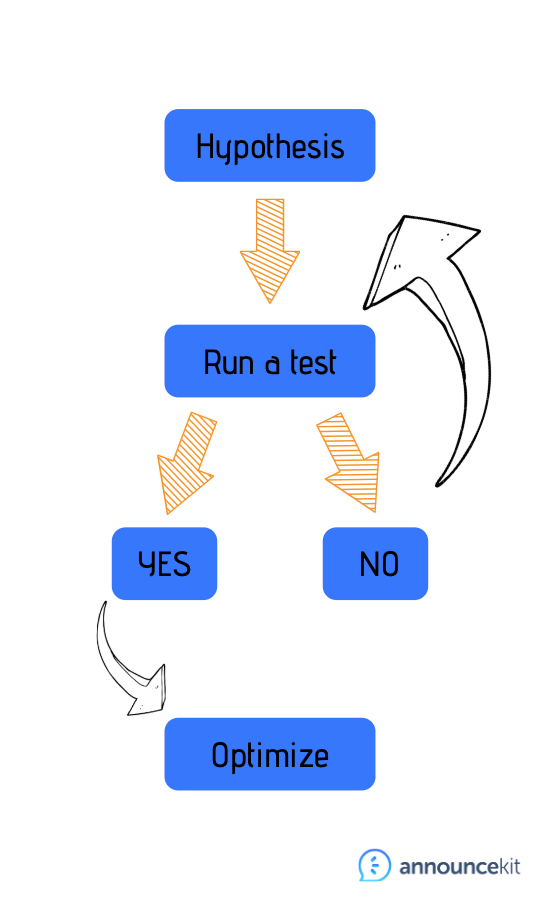Our parents used to work in traditional companies with vertical hierarchy, where their roles, skills, and responsibilities were determined by the HR department and higher management. Their goals and tasks were specified ahead of time. So organizations hire one specialist to perform one job.
In small software companies, many roles can be performed by one person. The same team member can be responsible for email marketing, customer support, and blog copy.
It is a flexible environment, where specialists wear different hats every day depending on the direction the SaaS company is heading to – every day is a gamble day.
This is why the concept of job titles becomes complicated. Who am I? Growth hacker or product manager? Digital marketer or Copywriter?
However, it is important to distinguish the difference between the growth of hackers and product managers. Because once your business grows, you will need to hire two different teams.
Skills and Responsibilities
In its essence, both product managers and growth hacker share three main principles:
- Rapid SAAS metrics growth
- Optimization of processes
- Open processes and transparency
If we look at what those teams do on a daily basis – things look similar. Generate a hypothesis > run an experiment that potentially increases metrics> analyze the results. The difference between them lies in the hypothesizes that they create and the experiments they run.

Product manager hypothesis / Growth hacker hypothesis
We recently ran a test at AnnounceKit. The main goal was to determine whether using Social Proof in onboarding emails for trial users improves conversion rates. (The experiment showed a 56% increase.)
Also, AnnounceKit developers and PMs (product managers) often test whether feature X will improve user engagement or design Y improve the overall user experience.

Let’s dive a bit deeper and answer what both PMs and Growth Hackers do?
1. Analyze user behavior even after the purchase
Growth-Marketer monitors every part of the sales funnel and analyzes the behavior of users in it. This gives an understanding of what works and what needs to be improved. As a result, hypotheses appear on how to improve conversion and retention rates.
A product manager monitors every action users perform to uncover user experience and whether user behavior corresponds to the anticipated user journey. This gives an understanding of what works and what needs to be improved. As a result, hypotheses appear on how to boost conversion and retention rates.
2. Help users to find the Aha moment

Aha-moment is every SaaS companies’ ultimate goal. When a person realizes the value of a product and decides to use it. The task of both Growth marketer and Product manager is to make this moment happen to as often as possible.
3. What can be improved to retain users
Both Growth-marketer and Product managers constantly think about changes. They implement strategies that convert leads to paying customers and then monitor the user base growth.
They draw conclusions and hypotheses: what product updates need to be implemented to keep the user base continuously growing.
For example, AnnounceKit development and product manager working hard to create new features. If you see a new section on dashboard appeared or a new widget, it is our teams testing hypothesis.
It is more about a mindset rather than one single strategy that works. This is how our PM thinks: “I see that users leave our product, most likely they are missing this and that feature. How to hold them back and encourage them to use X, Y, Z features on top of the main feature they’ve just tested?”
Different tactics that PMs and Growth hackers use

Conclusion
Some people argue that one person can be both a growth hacker and a product manager. We’ve already realized that two roles share one goal and similar principles. However, they use different techniques and strategies to achieve a boost in retention and conversion rates. Who are you? Are you a product manager or growth hacker?







